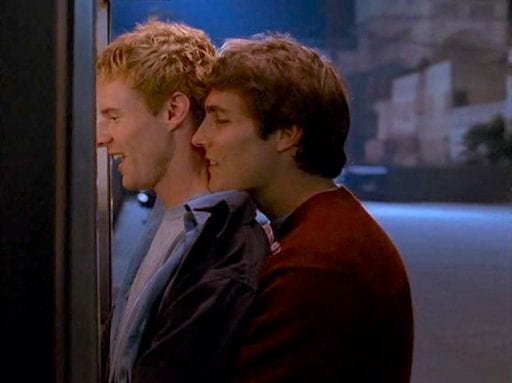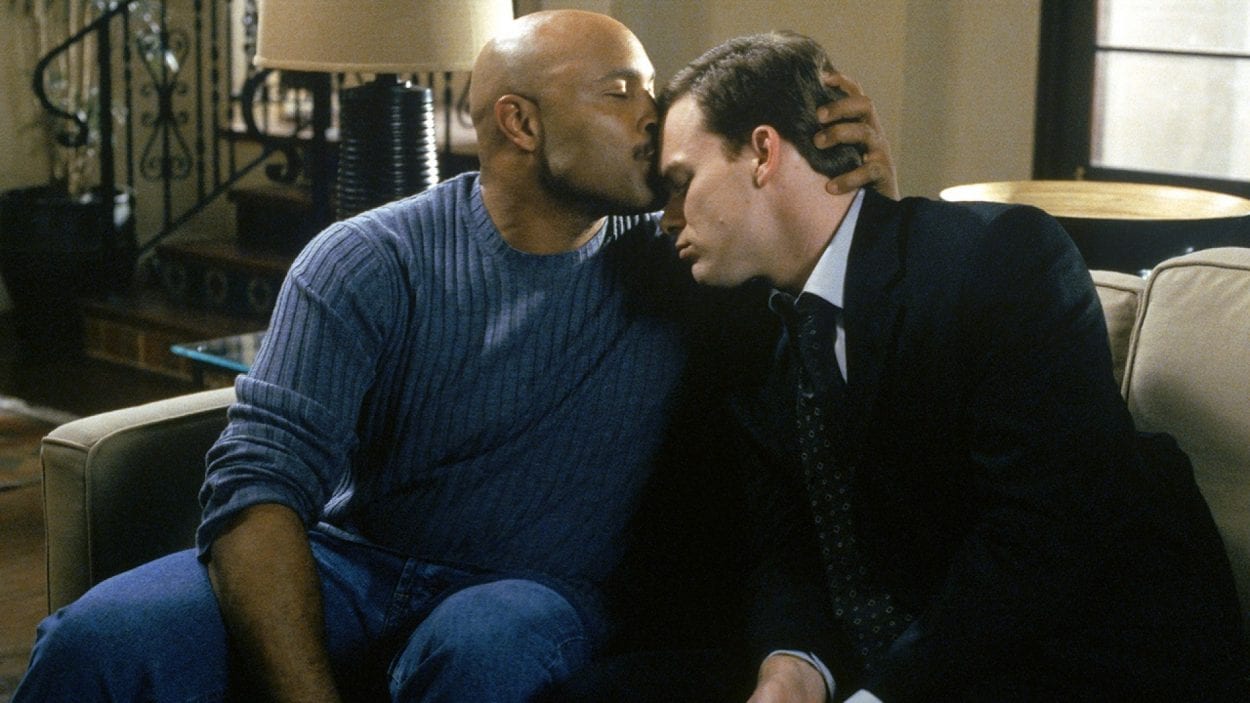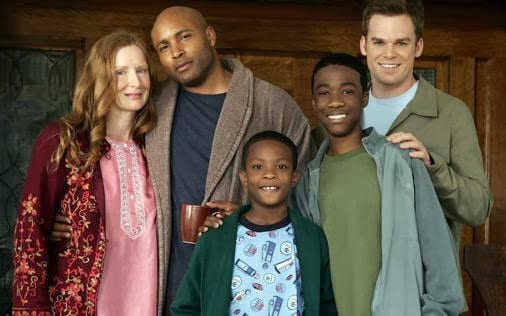When Six Feet Under premiered on HBO in 2001, LGBTQ characters were still were novelty than normal. L.A. Law had their lesbian kiss ten years earlier and Ellen came out on her sitcom four years prior and of course there was the groundbreaking Queer as Folk, but television was still somewhat slow moving introducing characters who were same sex attracted with any regularity. Six Feet Under would change the conversation, removing any sense of novelty from David and Keith and normalizing a relationship between two men in a way that would change television forever.
While still playing with certain stereotypes and stigmas, the relationship between Keith and David was never fetishized. When we met the characters, David was still struggling with coming out. The tension that would arise between the two men was natural and realistic, especially for the time period. Much of the first season was spent with David struggling with his complicated feelings over his sexuality. His religious beliefs added to a sense of guilt he carried, a desire to be what he called “normal”—a completely understandable story that by today’s standards may feel a little played out, but for the time wasn’t. It was an accurate portrayal of feelings many gay men, especially from a previous era, perhaps experienced.
Keith had no problem being out. He was confident in that era of his life but what made him interesting was his continuing struggle with his anger issues. Keith’s character had suffered physical and mental abuse from his father as a child, abuse his sister would also experience. Was any of this abuse from his father because of the fact that Keith was gay? It’s hard to say, although we do we see that as an adult Keith’s father is visibly disgusted by Keith and David’s intimacy. The power of the writing here is that Keith was a three dimensional character. His sexuality wasn’t his only defining trait. The fact that he was a gay man surely added to his already existing anger issues but they weren’t the nucleus of the problem. Writing this in 2020, there are now countless examples of characters on television that were multi dimensional and not defined by their sexuality but in 2001, that wasn’t the case yet. Keith Charles was the exception, not the rule.

Season 1 was written when the murder of Matthew Shepard was still fresh in everyone’s minds. The hate crime that captured the nation’s attention and began a pivot in conversations people were having in living rooms all across America served as the inspiration for one of Six Feet Under‘s most powerful stories. A young gay man, Marcus Foster Jr, was murdered simply for the fact that he was gay, and his body came to Fisher and Sons. This was at the height of David’s personal struggles. He and Keith had split up and David was desperately trying to calm the voices in his head. One night stands, sex with prostitutes and diving further into a church that he knew in his heart didn’t accept the real him were some of the ways that he tried to get through the day. Seeing the cruelty towards Marcus, the blind hate it would require to murder a person just because of who they love and then the reaction of Marcus’s father in particular brought David to a point of crisis. Should he out himself to his family? Could he change who he was? Why was this his life? Could he ever be happy?
I knew Six Feet Under was different than other shows when the ghost of Marcus Foster Jr didn’t stop haunting David after one episode. There was no neat bow tied at the end of the episode. David’s acceptance of self wasn’t going to be pretty or cinematic. What we saw the character experience however, was true to life. We saw David tell his mother that he was gay, as awkward and inappropriately funny as it was. We saw David come out to those at his church and be asked to step down as a deacon. We watched this severely repressed man take step after step towards accepting himself. No, the life of a gay man isn’t an easy one but the ghost of Marcus Foster Jr walked step by step with David as he took the steps he needed to finally live freely and openly, to quit pretending that he was a version of himself that in his mind, other people wanted him to be. I would imagine that the murder of Matthew Shepard likely brought up similar feelings in many people in real life, the same as fictional Marcus did on the show.
David and Keith’s relationship constantly grew and changed over the course of the show’s five seasons. When they got back together, they still had issues to work out. They were a couple that benefited from therapy, something that many heterosexual couples did on television. Something as simple as this went a long way in normalizing a relationship between two men. To a large part of the public, gay couples were still an enigma, their relationships rooted in stereotypes such as clubbing and sex lives that were rooted in fetish. By having David and Keith experience the same trials and tribulations that other couples do, stereotypes were challenged and perceptions slowly changed. When David and Keith did experiment by having sex with a third partner or allow each other to sleep with other people, the focus was on the emotional impact these things had on them and not an overly fantasized sex life. They experienced the same things that heterosexual couples would in these situations, unlike a show like Queer as Folk for example, which examined these stereotypes from a different angle. Six Feet Under, without being in your face about it, told you that the gay couple was no different than the straight couple in more ways than you might have realized.

I’ve always found one of the most powerful episodes in the series to be Season 3’s “Nobody Sleeps.” In this episode, a set designer dies and his partner wants to hold an elaborate opera at Fisher and Diaz (renamed from Fisher and Sons) as a farewell tribute to the man he loved. This episode saw David take a journey where at first, he was completely blown away by this display of love and being overwhelmed by a desire to also grow old with the man he loved. From there, as David learned more about the couple, he found himself disgusted by their sexual behaviors and how many other men they slept with. By the end of the episode, David had come full circle, acknowledging that while the sexual culture had been much different in the pre-AIDS era, that didn’t take away from how much these men loved one another. While this was David’s journey, it was also a journey for the viewer. These outdated ideas of gay men sleeping with countless partners do not define gay men today, not that they ever truly did. It was a stereotype that could be shattered and Six Feet Under worked to do just that.

David and Keith were a love story, no different than any other we’ve seen over the years in television and film alike. These men had their problems at times but loved each other enough to work through them. As gay men, they faced unique challenges that the show didn’t shy away from, such as trying to become parents in Season 5. While Six Feet Under’s lasting legacy will be a multilayered one, a bit part of it was normalizing a relationship between two men. In 2020, it almost feels funny to be calling attention to that because we have come a long way as a society but 19 years ago, that wasn’t entirely the case. Television was coming around to LGBTQ issues and characters, but not always in the most sensitive or realistic ways. Six Feet Under changed that, in a natural yet unapologetic way and television as a whole has benefited from it ever since.

